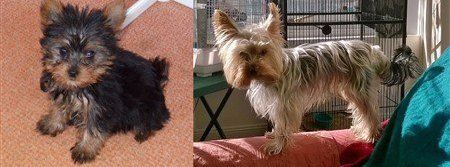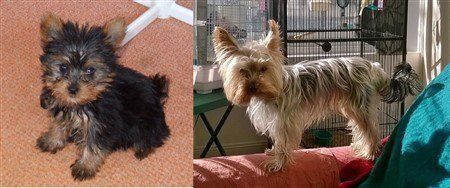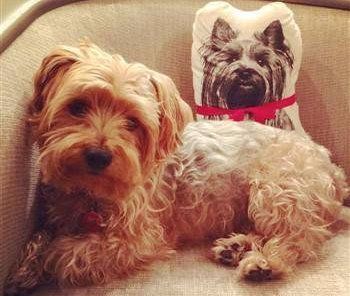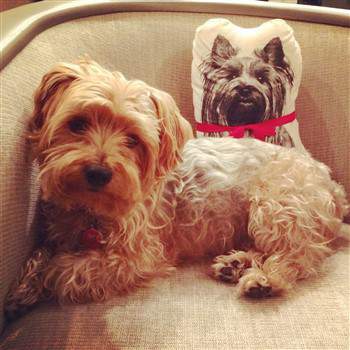Yorkshire Terriers that are Mostly or Fully Tan
Overview
Reason #1 - Appearing All Tan, But Not Really
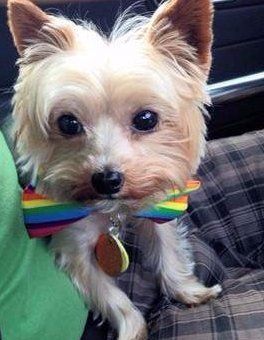

Photos 1 & 2 above: Oliver Wellington, courtesy of Lex & Rick
Reason #2 - Appearing Mostly Tan, Short Coat
King, 7 years old, photo courtesy of Lee
Reason #3 - Losing a Lot of Black as They Grow
Truffle, as a puppy and then as a 2 and 1/2 year old dog, photos courtesy of Deborah
Reason #4 - Yorkshire Terriers That Are Truly All Tan with No Black
Bear, a fully tan Yorkshire Terrier, whose black/blue grew out as he grew up! Photos courtesy of Alexandra G.
The Genetics Behind Yorkshire Terrier Coat Colors and How this Related to Minimal Blue
Yorkshire Terriers are known for their beautiful, silky coats that are traditionally blue and tan. The breed standard specifies that the coat is dark steel blue (not silver blue) and rich tan. The genetic makeup responsible for this unique coloration involves a combination of alleles (different forms of a gene) at multiple gene loci.
The Basics of Coat Color Genetics:
Coat color in dogs is primarily determined by two pigments: eumelanin (black) and pheomelanin (red). The specific color and pattern of a dog's coat are influenced by various genes that regulate the production, distribution, and expression of these two pigments.
Key Genes Involved:
B Locus (Brown): The B locus, with the dominant "B" allele coding for black eumelanin and the recessive "b" allele coding for brown eumelanin, is not directly responsible for the blue coloration but is essential in the overall color expression. Yorkshire Terriers typically have the "BB" or "Bb" genotype, ensuring the presence of black eumelanin, which is diluted to blue.
D Locus (Dilution): The dilution gene affects the intensity of the eumelanin pigment. The "D" allele is dominant and produces the standard eumelanin color, while the "d" allele is recessive and dilutes the color. For Yorkshire Terriers, blue is achieved when the black eumelanin is diluted. A dog with the "dd" genotype will have diluted black pigment, resulting in a blue coat.
A Locus (Agouti): This locus controls the pattern of color on the coat. The specific alleles here determine the coat's distribution of black and tan colors. Yorkshire Terriers express a pattern where the tan color appears in specific areas (face, chest, legs) due to the influence of alleles at this locus.
Genetic Variation and Tan Dominance:
In some Yorkshire Terriers, the tan color may appear more prominently or almost entirely, covering areas usually reserved for blue. This can occur due to a variety of genetic factors, including modifier genes that influence the expression of the main color genes or variations in the genes responsible for pigment distribution. While the exact genetic mechanisms can be complex and involve multiple genes interacting, the principle remains that these variations are the result of the dog's genetic makeup.
Rarity of Minimal Blue:
The instances where blue is minimal or almost absent are rare and considered a deviation from the breed standard. This could be due to a combination of genetic factors that significantly reduce the expression of the diluted black eumelanin, resulting in a coat that appears mostly tan. It's important to note that while this may be aesthetically pleasing to some, it is not what is aimed for in breeding programs focused on adhering to the breed standard.
More Articles:
Yorkshire Terrier Exercise Tips- How to balance physical activity and rest for optimal health. Fun ideas for offering exercise for puppies and adults, ensuring all Yorkies stay active and content.



